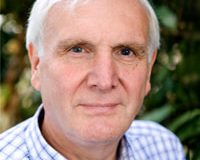 Over the past eight years, London has seen tremendous growth not only in population, but in terms of its economy, housing and jobs.
Over the past eight years, London has seen tremendous growth not only in population, but in terms of its economy, housing and jobs.
Unlocking unused public land is vital in achieving the mayor’s aim of building 500,000 homes for Londoners over the next decade. To speed up development, the mayor has already designated 20 housing zones, which will deliver 50,000 new homes, and is poised to announce a further 11.
There has been a significant increase in the number of planning applications referred to the mayor. These are plans for developments of more than 150 units, which are of strategic importance to London. The number of referrals to City Hall has increased each year of this term and last year the mayor presided over 454 planning applications – nearly double the number referred in 2010.
The mayor hasn’t shied away from making tough decisions either to ensure the planning system works for the benefit of all Londoners. Since 2008, he has stepped in to determine 17 applications himself, which will deliver 12,210 new homes for the capital that otherwise would not have been built.
A key feature of this mayoralty has been a cast iron commitment not to build on green belt land and that has been achieved through innovative planning and the identification of 38 opportunity areas, which are London’s reservoirs of brownfield land. Through detailed modelling at City Hall, opportunity areas have the potential to accommodate more than 300,000 new homes and more than 500,000 jobs.
At a time when London’s population continues to grow apace, major development sites such as Nine Elms (20,000 homes and 25,000 jobs) and Old Oak and Park Royal (25,500 homes and 65,000 jobs) are fantastic examples of what can be achieved with good planning.
The mayor has been clear throughout his time in office, however, that the fundamental piece of the jigsaw is transport infrastructure. What makes London work is building train lines under and over ground, bridges, cycle lanes and roads. It connects people, but crucially creates a place for communities to thrive and for Londoners to work close to where they live, something that is a priority for us all.
That is why the mayor has campaigned so hard for Crossrail, which is going to be the key to unlocking great swathes of surplus brownfield land to ensure we build the homes and work space Londoners so urgently need.
But it’s not just housing that is crucial to the prosperity of this city. In the next 20 years, we need to build offices and commercial space for 860,000 new jobs in the capital. That means protecting London’s office buildings in the Central Activities Zone to stop them being converted to residential properties. The mayor has again been out in front pushing this cause and it is the reason City Hall has fought to extend the exemptions under permitted development until 2019.
While there are challenges ahead to meet the population expansion, what is abundantly clear is that the growth over the past eight years leaves London in a far healthier place and continues to be a major attraction for millions of people to live and do business in.
Sir Edward Lister is the deputy London mayor for policy and planning










